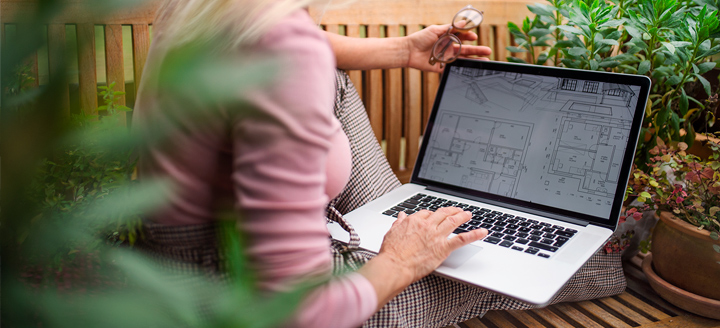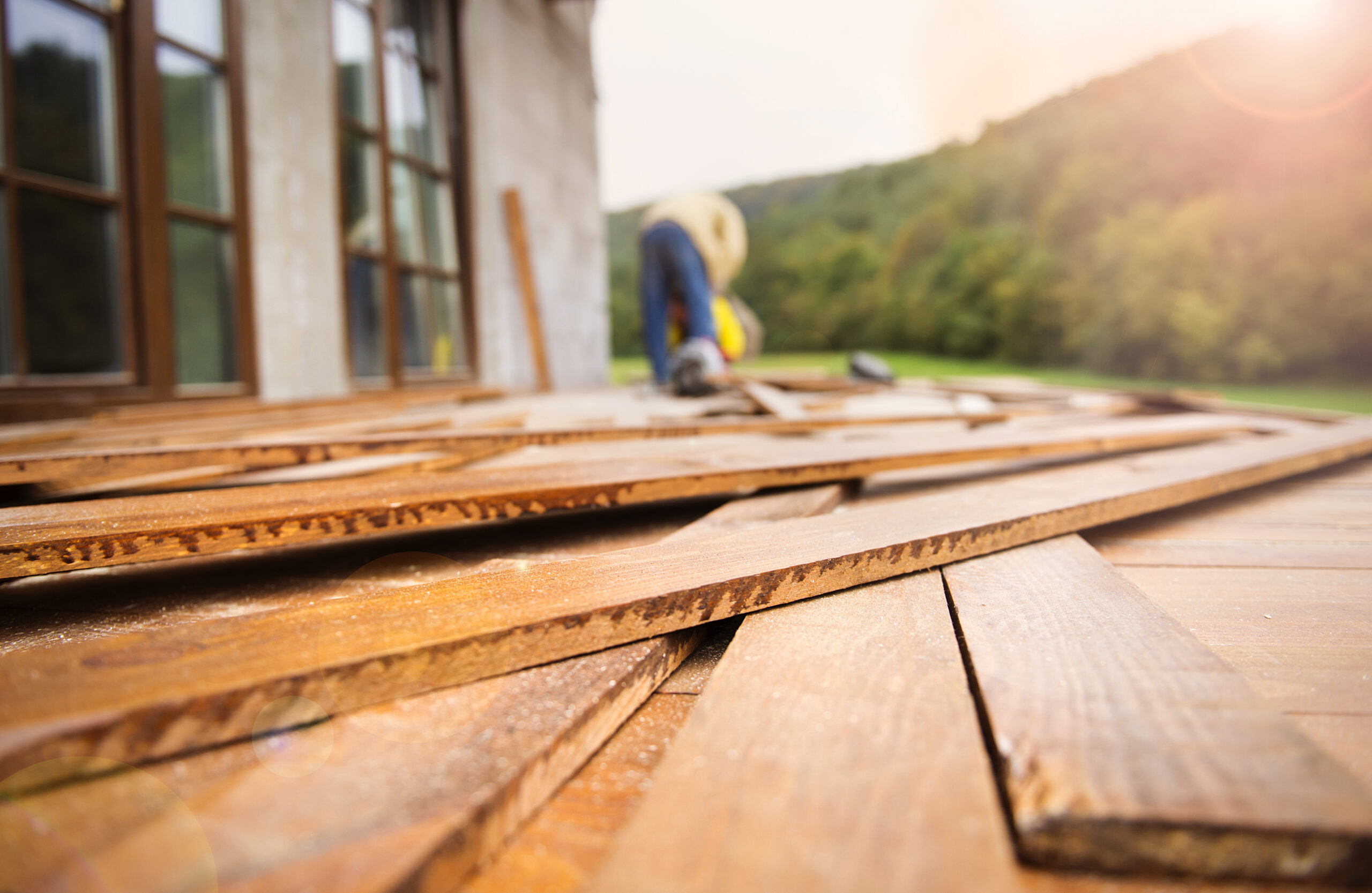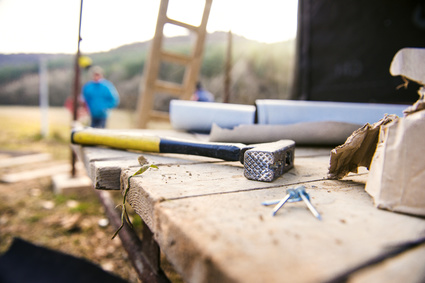You’ve long yearned for an outdoor kitchen that will allow you to make the most of those long summer days in your backyard. Today, you’ve finally made up your mind: you’re going to start putting together your wish list for this major project! However, despite all your current inspirations, it seems difficult to figure out where to start? Which materials are best? Which appliances are the most resistant to withstand the harsh weather conditions of the outdoors? And how not to forget anything?
In order to help you create an outdoor kitchen that will meet your needs and last over time, we’ve put together some practical advice.
1. Choosing the right countertop material
We all know it: Quebec’s climate can often be unpredictable and regularly teeters on the brink of extremes. For your countertop, it is therefore essential to choose a durable material that can withstand both frost and heat! Here are a few examples of materials that have stood the test.
Natural stone
Definitely a classic material, natural stone never seems to go out of style and is as popular as ever. This category includes granite and slate.
Resistant and known for its elegance, granite is made of solidified liquid minerals such as quartz. While it is often very popular in conventional kitchens, it could also be an appealing choice for outdoor kitchens. The typical thickness of a granite countertop can vary from ¾ in. to 1 ¼ in.
Slate is also an interesting option because it is resistant to both water and intense heat. This is a feature that should not be overlooked! Durable and solid, this type of stone has an absolutely unique charm with its black tint and two different finishes: polished (smoother) or natural (with charming imperfections). The average thickness of a slate countertop is about 1.5″, but some gluing can be done to create the impression of a different thickness.
Neolith
Neolith is a particularly compact type of porcelain. It is made from a mixture of clay, feldspar, silica, oxides, natural minerals and pigments. It is thin and extremely resistant, requiring no special maintenance and retaining its structure and appearance in spite of heat, humidity and other irritants.
Dekton
Also very compact and sophisticated, Dekton combines several raw materials generally associated with good quality porcelain, glass and quartz. Like Neolith, it requires no maintenance and its porosity is virtually zero.
Lapitec
Finally, Lapitec also falls in line with these new materials: easy to care for and as elegant as it is durable. It is an innovative, high-performance and refined sintered stone, whose characteristics and appearance are similar to those of natural stone.
2. Carefully Pick Out Your Appliances
Just like your countertop, it is very important that your appliances can adequately withstand bad weather. Whether it’s for your barbecue, your pantry, your storage spaces or simply your cabinet handles, making the right choice is essential.
Aluminum and stainless steel are generally the most recommended materials.
Aluminum
Aluminium is a very lightweight material, aesthetically pleasing and easy to maintain. A metal as solid as it is unalterable, it offers remarkable resistance to the climate, without ever losing its shine.
How is this made possible? Thanks to the oxide layer that forms naturally on its surface when it comes into contact with oxygen, aluminum is able to protect itself from corrosion damage. Simple and practical!
Stainless steel
Stainless steel owes its high resistance to a similar principle. Indeed, when its surface comes into contact with oxygen and humidity in the air, a layer of chromium oxide is created on the surface, which offers good protection against external aggression.
Appliances made of stainless steel are therefore easy to maintain, making them good choices for your outdoor kitchen.
3. Paying attention to the smallest details
Before you start building your new kitchen, there are some details you should keep in mind. Here are a few of them!
Municipal and governmental standards
As you probably know, you can’t renovate or build what you want as you please. Of course, there are certain laws or standards that must be respected for your project.
Before you even consider all the details of your outdoor kitchen plan, find out what municipal standards must be met for this type of renovation, and check whether you need to obtain a permit before proceeding. This will ensure that you start your project off on the right foot and avoid potential problems.
Electricity and plumbing
You can’t talk about kitchens, without considering appliances and a sink… So you can’t neglect access to water and electricity! Whether your cooking system is gas or electric, you will need to plan for all the necessary connections when designing your new kitchen. You’ll never have too many electrical outlets, that’ s for sure!
Lighting, but also heating!
Even the most beautiful evenings in July can be a little chilly. You won’t regret installing a heating system or a fireplace in your kitchen! This is an important feature to consider when developing your plan.

As far as lighting is concerned, just follow your preferences, your budget and the layout of your kitchen. In fact, the important thing is that you have enough light to clearly see your work surface, and that you can dim the lighting to create a more intimate atmosphere if necessary.
Creating your own outdoor kitchen is a beautiful project that requires you to make several strategic choices. You can also consult with a professional landscaper. With a few tips from us, you should be able to get by without too much trouble. Would you like to discover the latest trends in landscaping to get a little inspiration? Download our guide!


-752-1.jpg?width=2500&height=1667&name=Projet%20Manoir%20Hovey-Paysage%20du%20monde%20des%20affaires%20(Moment%20sublime)-752-1.jpg)
.jpg)


.jpg)



